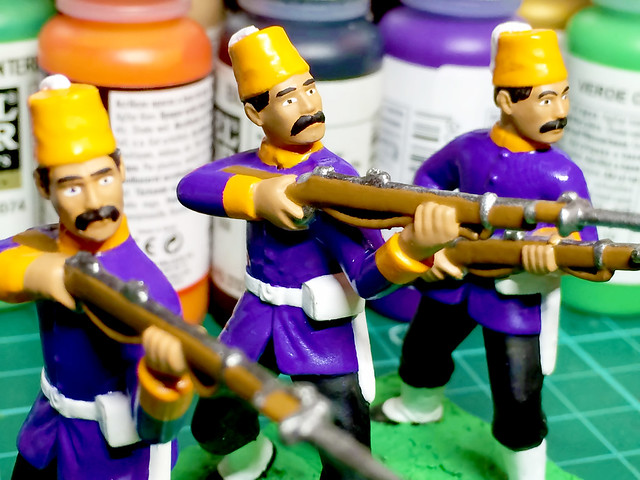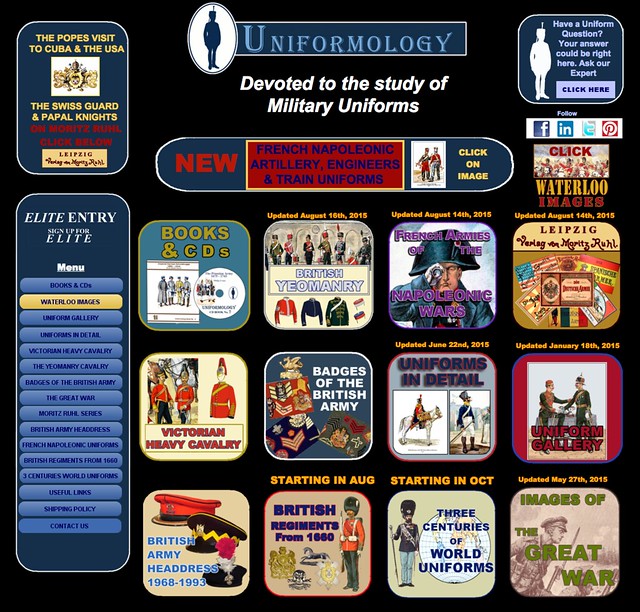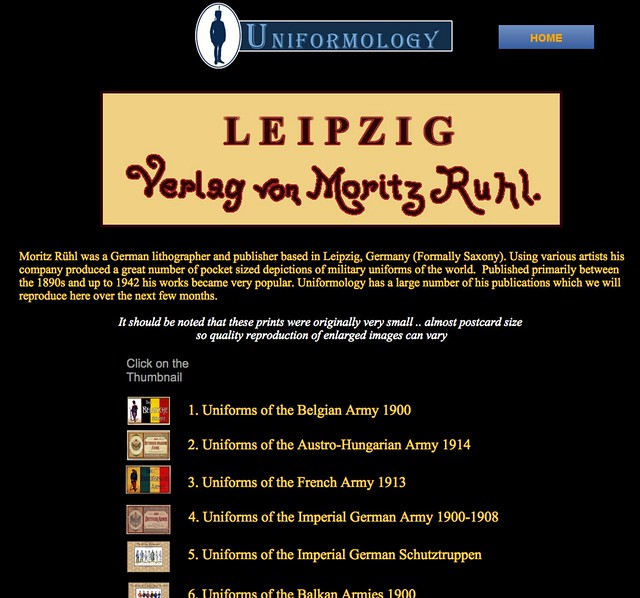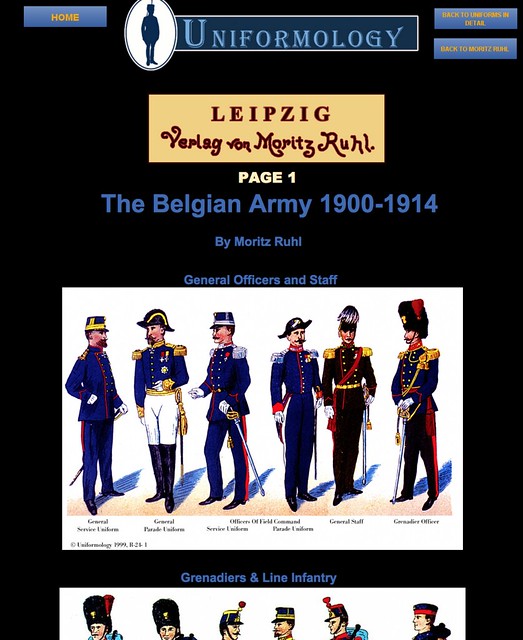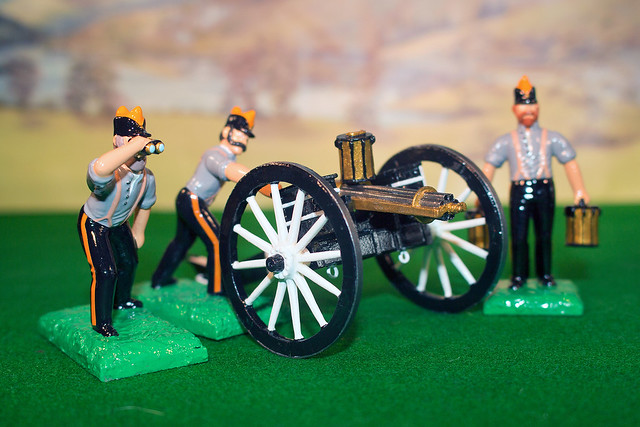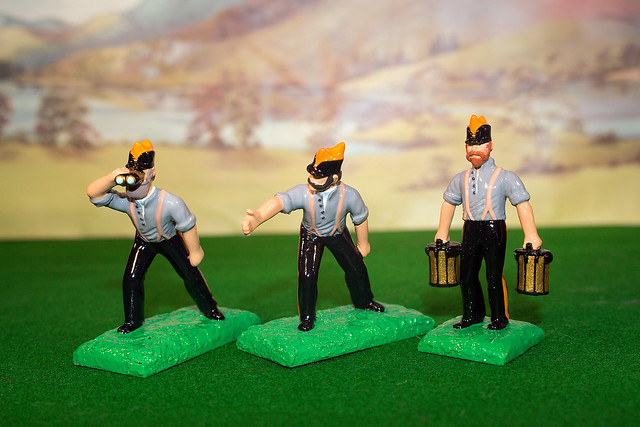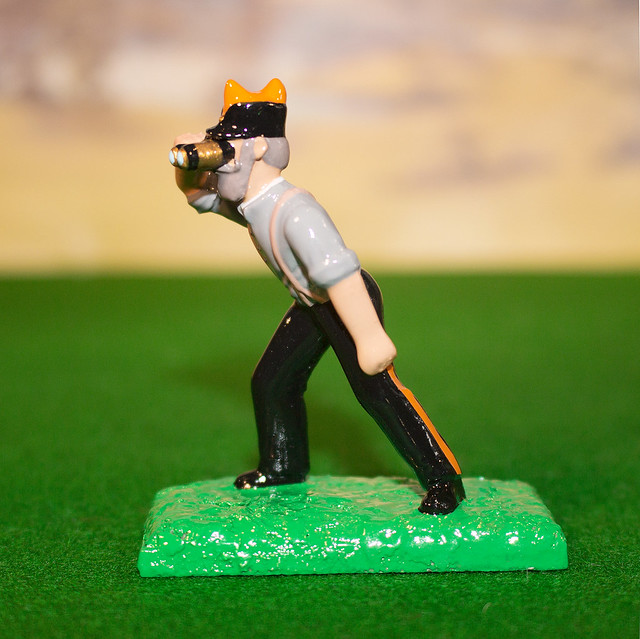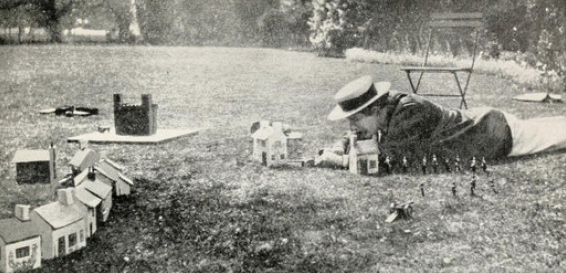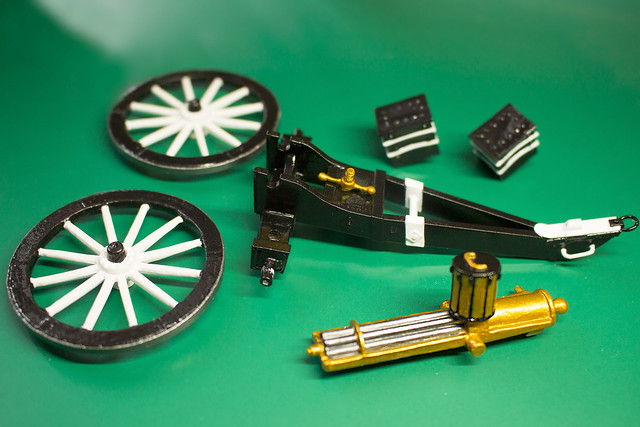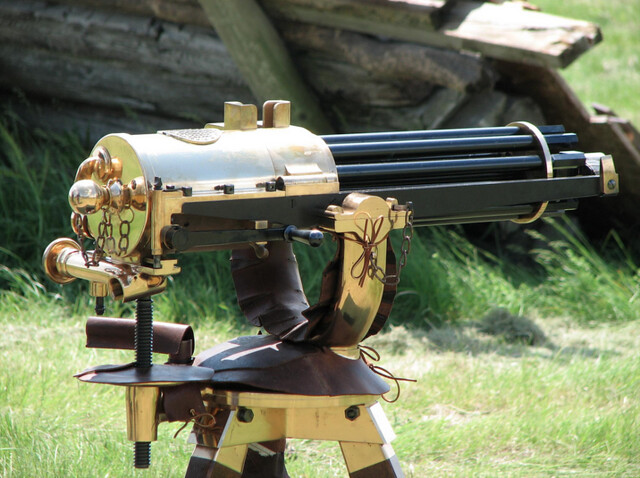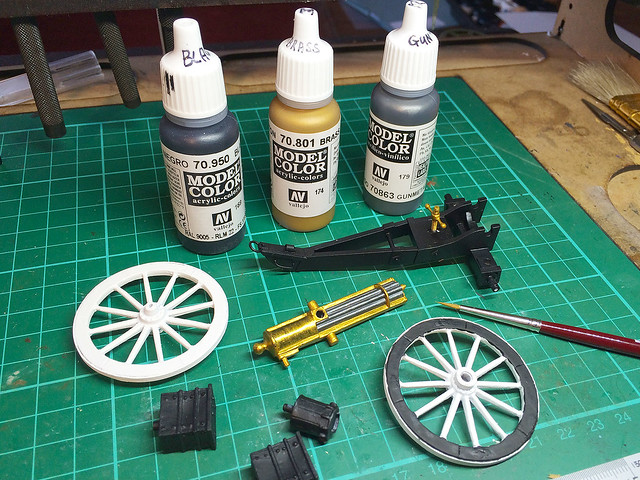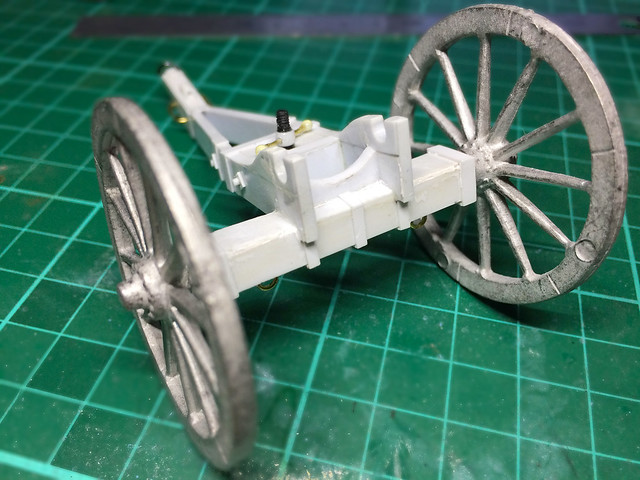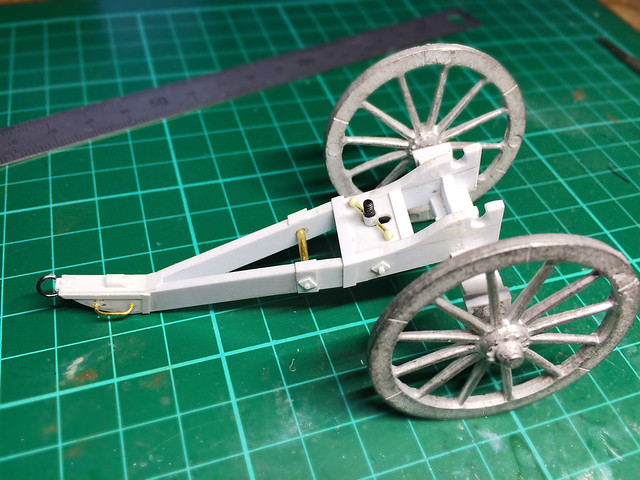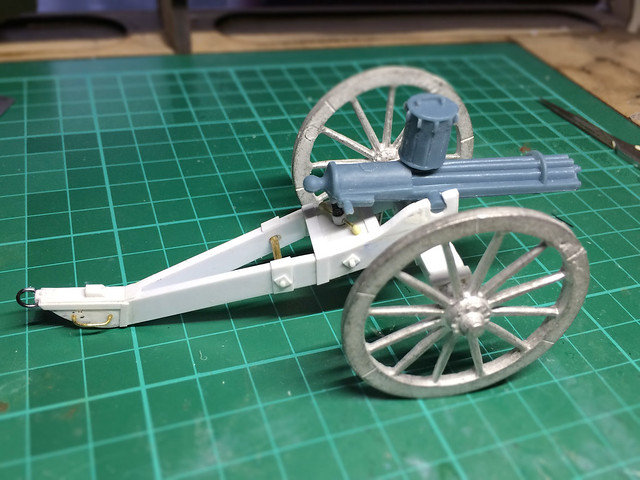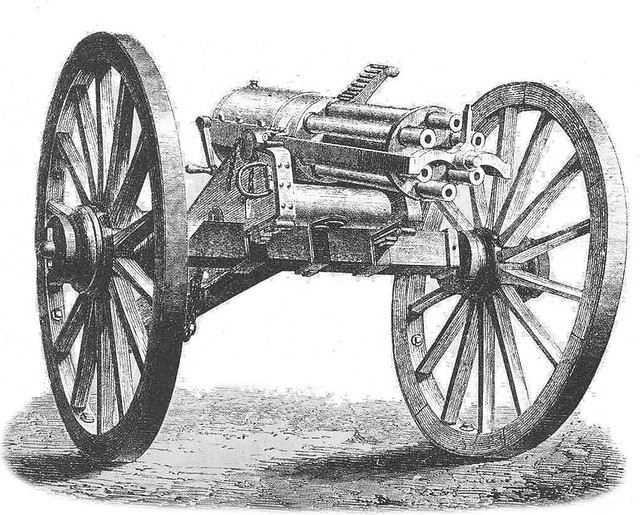About halfway with my Burkish regiment...Phew!
Edit: I have been asked why all my Burkish troops look somewhat surprised! - I think I need to start painting on 'angry eyebrows'! :D
Being the Ethereal Embassy for the Kingdom of Molatero and it's participation in the Funny Little Wars
Wednesday, 30 September 2015
Tuesday, 29 September 2015
Good FLW resource - Uniformology.com
Here’s a web site of a company that I only recently discovered, I’m sure it’s been around for a while though. But just in case someone out there in FLW-land hasn’t heard about it I thought I’d highlight it - as it is a very nice web site.
As the title suggests, Uniformology.com is (as they put it) ‘devoted to the study of uniforms’. They sell books and CDs all about the history of uniforms.
While they tend to specialise in Napoleonic themes there is the odd late 19th Century volume in their library of books. However, what makes the site worth a visit is the section of the site which showcases the work of Moritz Rühl.
The Rühl page includes links to 22 beautifully illustrated pages which cover the armies of Europe from about 1895 to The Great War (plus one on the uniforms of the Norwegian army of 1939).
Each page has a selection of wonderful period colour lithographs showing the uniforms of a particular army plus insignia. They are wonderful reference for the avid Funny Little Wars aficianado.
Here is a list of the armies covered on the site:
1. Uniforms of the Belgian Army 1900
2. Uniforms of the Austro-Hungarian Army 1914
3. Uniforms of the French Army 1913
4. Uniforms of the Imperial German Army 1900-1908
5. Uniforms of the Imperial German Schutztruppen
6. Uniforms of the Balkan Armies 1900
7. Uniforms of the Spanish Army 1895
8. Uniforms of the Italian Army 1895-1900
9. Uniforms of the Imperial Russian Army 1890-1908
10. Uniforms of the Imperial Russian Army in the Field 1914
11. Uniforms of the United States Army 1882-1903
12. Uniforms of the United States Army 1913
13. Uniforms of the Austro-Hungarian Army & Navy 1888-1895
14. Field Grey Uniforms of the Imperial German Army 1914
15. Imperial German Army Badges, Insignia & Flags 1910-1914
16. Imperial Japanese Army 1900
17. Imperial Chinese Army 1910
18. Schematics of the Uniforms of the Imperial German Army 1908
19. Horizon Blue Uniforms of the French Army 1915
20. Service Uniforms of the Italian Army 1915
21. Uniforms of the Norwegian Army 1939
22. Uniforms of the Swiss Guard & Papal Knights
Furthermore, there is even better news if you are a enthusiastic follower of Victorian and Edwardian British Army uniforms. Uniformology also have several sections devoted to British Regiments!
All-in-all it’s a excellent web resource for your uniform research.
As the title suggests, Uniformology.com is (as they put it) ‘devoted to the study of uniforms’. They sell books and CDs all about the history of uniforms.
While they tend to specialise in Napoleonic themes there is the odd late 19th Century volume in their library of books. However, what makes the site worth a visit is the section of the site which showcases the work of Moritz Rühl.
The Rühl page includes links to 22 beautifully illustrated pages which cover the armies of Europe from about 1895 to The Great War (plus one on the uniforms of the Norwegian army of 1939).
Each page has a selection of wonderful period colour lithographs showing the uniforms of a particular army plus insignia. They are wonderful reference for the avid Funny Little Wars aficianado.
Here is a list of the armies covered on the site:
1. Uniforms of the Belgian Army 1900
2. Uniforms of the Austro-Hungarian Army 1914
3. Uniforms of the French Army 1913
4. Uniforms of the Imperial German Army 1900-1908
5. Uniforms of the Imperial German Schutztruppen
6. Uniforms of the Balkan Armies 1900
7. Uniforms of the Spanish Army 1895
8. Uniforms of the Italian Army 1895-1900
9. Uniforms of the Imperial Russian Army 1890-1908
10. Uniforms of the Imperial Russian Army in the Field 1914
11. Uniforms of the United States Army 1882-1903
12. Uniforms of the United States Army 1913
13. Uniforms of the Austro-Hungarian Army & Navy 1888-1895
14. Field Grey Uniforms of the Imperial German Army 1914
15. Imperial German Army Badges, Insignia & Flags 1910-1914
16. Imperial Japanese Army 1900
17. Imperial Chinese Army 1910
18. Schematics of the Uniforms of the Imperial German Army 1908
19. Horizon Blue Uniforms of the French Army 1915
20. Service Uniforms of the Italian Army 1915
21. Uniforms of the Norwegian Army 1939
22. Uniforms of the Swiss Guard & Papal Knights
Furthermore, there is even better news if you are a enthusiastic follower of Victorian and Edwardian British Army uniforms. Uniformology also have several sections devoted to British Regiments!
All-in-all it’s a excellent web resource for your uniform research.
Monday, 28 September 2015
Hmmmm...What next?
One of those 'notes to myself' really. Although I don't want to spoil the FLW roll I seem to be (finally) on - as my Burkish regiment is coming along nicely - I would like a little variety.
I keep looking at those French 1900 infantry of the line (by Black Hat) that I started...
I do like the Black Hat soldiers, they are quaintly - how do I put this politely - 'unique'. They are a bit on the 'chunky' side - but only in that barrel-chested Edwardian sort of way. (Amusingly I based my first figure sculpt - 'Harry' - on them and my brother called him 'chubby'!)
Anyway...I'm tempted to see if I can knock out a half-regiment of French, just for the hell of it (I do want to do a 'Horizon Blue' aymy at some point in the future but that will be based on the slightly smaller 54mm 'traditional toy soldier' size).
...If I get these chaps painted I may try my hand at selling them on eBay. You never know, someone might like them! (Depends what kind of job I make of painting them I suppose.)
I keep looking at those French 1900 infantry of the line (by Black Hat) that I started...
I do like the Black Hat soldiers, they are quaintly - how do I put this politely - 'unique'. They are a bit on the 'chunky' side - but only in that barrel-chested Edwardian sort of way. (Amusingly I based my first figure sculpt - 'Harry' - on them and my brother called him 'chubby'!)
Anyway...I'm tempted to see if I can knock out a half-regiment of French, just for the hell of it (I do want to do a 'Horizon Blue' aymy at some point in the future but that will be based on the slightly smaller 54mm 'traditional toy soldier' size).
 |
| The difference in size between Black Hat's 1/32 scale soldiers (far right) and some more traditionally sized 54mm soldiers (by Irregular Miniatures). |
Wednesday, 23 September 2015
AiP 1/32 Gatling Gun set complete
Well, although this was intended as just a way of getting me back into my FLW hobby my AiP Gatling Gun set has turned out to be my very first complete FLW unit! Huzzah!
It's a wee bit rough around the edges (my Gatling carriage is a bit shoddy), but I'm very pleased with the gun crew. The colour scheme for my artillery regiment was a good choice I think (this is the 1870-1907 Molatero scheme, I was thinking of a subdued uniform scheme for the period just prior to and including The Great War).
Anyway, task completed and I feel like I have my FLW mojo back again. In fact I've already started getting my brushes into my first infantry regiment. But, back to the here and now, these little chaps are a fairly good start on my way to a modest Molatarian army - if I do say so myself!
It's a wee bit rough around the edges (my Gatling carriage is a bit shoddy), but I'm very pleased with the gun crew. The colour scheme for my artillery regiment was a good choice I think (this is the 1870-1907 Molatero scheme, I was thinking of a subdued uniform scheme for the period just prior to and including The Great War).
Anyway, task completed and I feel like I have my FLW mojo back again. In fact I've already started getting my brushes into my first infantry regiment. But, back to the here and now, these little chaps are a fairly good start on my way to a modest Molatarian army - if I do say so myself!
Labels:
1/32,
AiP,
artillery,
conversion,
Molatero,
plastic,
Project 11
Tuesday, 22 September 2015
The Funny Little Age - A 19th Century History
Audiobook: The Long 19th Century: European History from 1789 to 1917 by Narrated by: Professor Robert I. Weiner [Warning: Rambling monologue ahead!]
One of the great attractions, I think, of H. G. Wells's Funny Little Wars as a form of and theme for war gaming is the quaintness and varying state of obsolescence integral to any army of the Victorian or Edwardian period (the era which was the subject of H. G. Wells's original game).
There is something quite fascinating about the political, social and technological dichotomy of this period - the 19th century - as perhaps more than any other century the pace of modernity and the juxtaposition of the old and the new was acute and jarring. The great industrial revolution of the previous century had catapulted Europe into a new golden age of invention the like of which had never been seen before, but unlike previous ages of innovation the effects of this new 'modern' age were felt all the way down and more largely to the lowliest citizen.
In the past change had - on the whole - been slow and gradual and where the difference between one century and the next in terms of technological and scientific progress was bearly perceptible. The 18th and 19th centuries, on the other hand, saw an unprecedented acceleration in discovery where social, cultural and political attitudes were struggling to keep pace with innovation and implications of the new mechanisation.
Perhaps nowhere else was the clash of tradition and the modern so apparently at odds than in the military.
The 19th century could be seen as the transition between the grand old Regency world and the modern. Conservative attitudes appeared still firmly Napoleonic while innovations sought to pull military philosophy into the 20th century.
This is the backdrop to the world of Funny Little Wars, the miniature battlefield where regiments still largely appeared dressed as they might have at Waterloo but where also the weapons technology was very much a sinister precursor to the Great War of 1914 (the disastrous watershed that was the final nail in the coffin of the Edwardian Period).
All this leads me (finally) to this month FLW related reading matter - or rather, as usual in my case, 'listening matter' as it is an audio book.
To begin with this isn't a book at all (audiobook differentiations aside) but rather this is a series of academic lecture. This audio-lecture (then) is a part of a series of 'books' which come under the title 'The Great Courses'. A scholarly collection of lectures on history intended for college/university level students and amateur historians, and as such they might be just a wee bit dry if you are used to the rather more mainstream 'populist' history works.
This is very much like attending a college lecture and it's all very matter of fact, but as this is a subject that doesn't get a lot of airing - as most historians tend to be either interested in the Napoleonic preamble to this period or the culmination of The Great War - treatise of the 19th Century as a whole are a little thin on the ground.
I know that there are spots of military history which belong to this period that do have ample coverage by historians, The Crimean War (1853-56) The Franco-Prussian War (1870-71) and The Boer Wars (1880 to 1881 and 1889 to 1902) are popular subjects but otherwise historians tend to treat the century as the waiting room for the First World War! That's my personal opinion - but it's my experience that historians don't seem to be very interested in peacetime armies.
Anyway, so Professor Weiner's (yes, I know) collection of papers on the subject of the 19th Century is quite enlightening and good background material with which you can better understand the context of H. G. Wells's FLW hobby. You will be introduced to historical characters like Otto von Bismarck, and Kaiser Wilhelm II, the archetypal 'baddies' which so influence Funny Little Wars an it's scenarios and you will get a sense of the sort of political and diplomatic intrigue that influenced Anthony Hopes 'The Prisoner of Zenda'!
I can't exactly describe this 'book' as entertaining, but as a reference sourcebook for FLW 'plotting' it is very informative and useful. Here are just some of the titles of the lectures included in this work:
• The Napoleonic Era, 1799–1815
• The First Industrial Revolution, 1760–1850
• The Crimean War, 1853–1856
• Age of Bismarck—Creating the German Empire
• The Third Republic—France, 1870–1914
• Russia, Turkey, and the Balkans
• The “New” Imperialism European imperialism from the 1880s until about 1905
Link to the volume in the Audible Library: The Long 19th Century: European History from 1789 to 1917
Written by: The Great Courses
Narrated by: Professor Robert I. Weiner
Length: 18 hrs and 28 mins
Series: The Great Courses: Modern History
 |
| A Funny Little source-book! |
There is something quite fascinating about the political, social and technological dichotomy of this period - the 19th century - as perhaps more than any other century the pace of modernity and the juxtaposition of the old and the new was acute and jarring. The great industrial revolution of the previous century had catapulted Europe into a new golden age of invention the like of which had never been seen before, but unlike previous ages of innovation the effects of this new 'modern' age were felt all the way down and more largely to the lowliest citizen.
In the past change had - on the whole - been slow and gradual and where the difference between one century and the next in terms of technological and scientific progress was bearly perceptible. The 18th and 19th centuries, on the other hand, saw an unprecedented acceleration in discovery where social, cultural and political attitudes were struggling to keep pace with innovation and implications of the new mechanisation.
Perhaps nowhere else was the clash of tradition and the modern so apparently at odds than in the military.
The 19th century could be seen as the transition between the grand old Regency world and the modern. Conservative attitudes appeared still firmly Napoleonic while innovations sought to pull military philosophy into the 20th century.
This is the backdrop to the world of Funny Little Wars, the miniature battlefield where regiments still largely appeared dressed as they might have at Waterloo but where also the weapons technology was very much a sinister precursor to the Great War of 1914 (the disastrous watershed that was the final nail in the coffin of the Edwardian Period).
All this leads me (finally) to this month FLW related reading matter - or rather, as usual in my case, 'listening matter' as it is an audio book.
To begin with this isn't a book at all (audiobook differentiations aside) but rather this is a series of academic lecture. This audio-lecture (then) is a part of a series of 'books' which come under the title 'The Great Courses'. A scholarly collection of lectures on history intended for college/university level students and amateur historians, and as such they might be just a wee bit dry if you are used to the rather more mainstream 'populist' history works.
This is very much like attending a college lecture and it's all very matter of fact, but as this is a subject that doesn't get a lot of airing - as most historians tend to be either interested in the Napoleonic preamble to this period or the culmination of The Great War - treatise of the 19th Century as a whole are a little thin on the ground.
 |
| Anton von Werner's depiction of Wilhelm's proclamation as Emperor in the Hall of Mirrors in Versailles; Bismarck is in the centre-right wearing white. While it's easy to type-cast the Germans as the quintessential 'baddies' of the 19th Century in truth practically every major nation played their version of 'The Great Game'. [Picture source: Wikipedia] |
I know that there are spots of military history which belong to this period that do have ample coverage by historians, The Crimean War (1853-56) The Franco-Prussian War (1870-71) and The Boer Wars (1880 to 1881 and 1889 to 1902) are popular subjects but otherwise historians tend to treat the century as the waiting room for the First World War! That's my personal opinion - but it's my experience that historians don't seem to be very interested in peacetime armies.
Anyway, so Professor Weiner's (yes, I know) collection of papers on the subject of the 19th Century is quite enlightening and good background material with which you can better understand the context of H. G. Wells's FLW hobby. You will be introduced to historical characters like Otto von Bismarck, and Kaiser Wilhelm II, the archetypal 'baddies' which so influence Funny Little Wars an it's scenarios and you will get a sense of the sort of political and diplomatic intrigue that influenced Anthony Hopes 'The Prisoner of Zenda'!
I can't exactly describe this 'book' as entertaining, but as a reference sourcebook for FLW 'plotting' it is very informative and useful. Here are just some of the titles of the lectures included in this work:
• The Napoleonic Era, 1799–1815
• The First Industrial Revolution, 1760–1850
• The Crimean War, 1853–1856
• Age of Bismarck—Creating the German Empire
• The Third Republic—France, 1870–1914
• Russia, Turkey, and the Balkans
• The “New” Imperialism European imperialism from the 1880s until about 1905
Link to the volume in the Audible Library: The Long 19th Century: European History from 1789 to 1917
Written by: The Great Courses
Narrated by: Professor Robert I. Weiner
Length: 18 hrs and 28 mins
Series: The Great Courses: Modern History
Sunday, 20 September 2015
Burkish Infantry resumed - note to myself
Now I've done a refresher project and feel I have my FLW mojo back it's time to get back on track with some of my earlier work. First in line is my Burkish infantry.
These should have been an easy start for my new FLW hobby as they were a straight forward painting job based on Armies in Plastic's 1882 Egyptians. Though I have to admit I didn't think that this sort of 'simple' painting was as easy as I imagined it might be.
Getting nice solid flat colours was the big challenge for me. I'm a graphic designer by trade so I'm a might pernickety about staying inside the lines and flat colours!
Still, I found it very relaxing - once I had found the right paint for the job. For FLW glossy figures I found that the gloopy (it's a word, look it up) Tamiya acrylic range was right for me. While a little tricky to work with as it is quite thick it does produce a nice opaque coat.
Anyway, this brings me to the matter in hand - restarting mu Burkish infantry project. First things first, just what colours did I use for my original test figure? That's right, I - Mr. Meticulous - forgot to make a note of exactly which colours I used for my Burkish colour scheme. Du-oh!
So today I have been going through all my paints to see if I can match up the correct colours. This is where I discovered just how many shades of brown I had!
Note to myself - remember these colours!
It took me a while of dabbing on different paints to recreate my original test piece but eventually I have several identical Burkish troops. Phew. So here is the recipe just so I can refer back to it in the future (I'll make a point of writing posts like this for each of my figure painting projects).
[Note: Although I prefer Tamiya paints for this I do use Vallejo for certain undercoats and when Tamiya doesn't have exactly the colour I want.]
• Orange: Tamiya Acrylic X-6 Orange (a git to work with!)
• Purple: Tamiya Acrilic X-16 Purple
• Flesh tone: Vallejo Model Color 70843 Cork Brown
• Black: Tamiya Acrylic XF-1 Flat Black
• White: Tamiya Acrylic XF-2 Flat White
• Rifle wood: Vallejo Game Color 72043 Beasty Brown
• Rifle metal: Vallejo Model Color 70863 Gunmetal Grey
• Grass (undercoat): Vallejo Model Color 70891 Intermediate Green
• Grass (upper-coat): Tamiya Acrylic X-28 Park Green
Process - the production line
Just a little note about the production. Yes it's pretty straight forward and there's not a lot I can say about painting a unit of FLW soldiers. Again, it is a very relaxing activity - no brain required and it's something you can definitely do while watching TV (though I prefer listening to music).
As you might imagine I undertake a colour at a time across the 'regiment', all the trousers followed by all the tunics, etc, etc. And I work 'inside out' - by that I mean I start with the lowest layer and work outwards - beginning with the flesh tones and working up through the uniform ending with the webbing kit and weapons (ending with the base).
However I also have a procedure of three stages of coats; base coat, top coat and finally 'touching up'. It's a circle of painting where I run through all the soldiers in the unit and by the time I have done that the first ones should be dry and it's OK to start running though the next process.
And that's it.
Everyone will have their own technique and preferred style and I guess my little foible is that I do do eyes and eyebrows. But I don't shade - of course - and I don't do the 'red cheeks' that some traditional toy soldier painters like to do.
These should have been an easy start for my new FLW hobby as they were a straight forward painting job based on Armies in Plastic's 1882 Egyptians. Though I have to admit I didn't think that this sort of 'simple' painting was as easy as I imagined it might be.
Getting nice solid flat colours was the big challenge for me. I'm a graphic designer by trade so I'm a might pernickety about staying inside the lines and flat colours!
Still, I found it very relaxing - once I had found the right paint for the job. For FLW glossy figures I found that the gloopy (it's a word, look it up) Tamiya acrylic range was right for me. While a little tricky to work with as it is quite thick it does produce a nice opaque coat.
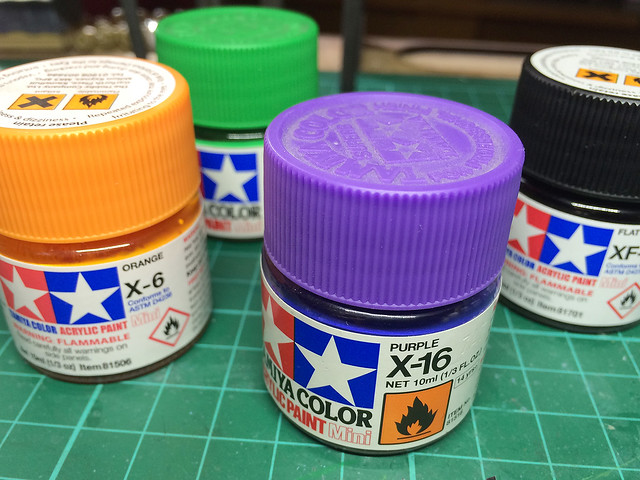 |
| Not easy to work with, in my opinion, but do give a superb flat opaque coat. |
Anyway, this brings me to the matter in hand - restarting mu Burkish infantry project. First things first, just what colours did I use for my original test figure? That's right, I - Mr. Meticulous - forgot to make a note of exactly which colours I used for my Burkish colour scheme. Du-oh!
So today I have been going through all my paints to see if I can match up the correct colours. This is where I discovered just how many shades of brown I had!
Note to myself - remember these colours!
It took me a while of dabbing on different paints to recreate my original test piece but eventually I have several identical Burkish troops. Phew. So here is the recipe just so I can refer back to it in the future (I'll make a point of writing posts like this for each of my figure painting projects).
[Note: Although I prefer Tamiya paints for this I do use Vallejo for certain undercoats and when Tamiya doesn't have exactly the colour I want.]
• Orange: Tamiya Acrylic X-6 Orange (a git to work with!)
• Purple: Tamiya Acrilic X-16 Purple
• Flesh tone: Vallejo Model Color 70843 Cork Brown
• Black: Tamiya Acrylic XF-1 Flat Black
• White: Tamiya Acrylic XF-2 Flat White
• Rifle wood: Vallejo Game Color 72043 Beasty Brown
• Rifle metal: Vallejo Model Color 70863 Gunmetal Grey
• Grass (undercoat): Vallejo Model Color 70891 Intermediate Green
• Grass (upper-coat): Tamiya Acrylic X-28 Park Green
Process - the production line
Just a little note about the production. Yes it's pretty straight forward and there's not a lot I can say about painting a unit of FLW soldiers. Again, it is a very relaxing activity - no brain required and it's something you can definitely do while watching TV (though I prefer listening to music).
As you might imagine I undertake a colour at a time across the 'regiment', all the trousers followed by all the tunics, etc, etc. And I work 'inside out' - by that I mean I start with the lowest layer and work outwards - beginning with the flesh tones and working up through the uniform ending with the webbing kit and weapons (ending with the base).
However I also have a procedure of three stages of coats; base coat, top coat and finally 'touching up'. It's a circle of painting where I run through all the soldiers in the unit and by the time I have done that the first ones should be dry and it's OK to start running though the next process.
And that's it.
Everyone will have their own technique and preferred style and I guess my little foible is that I do do eyes and eyebrows. But I don't shade - of course - and I don't do the 'red cheeks' that some traditional toy soldier painters like to do.
Wednesday, 16 September 2015
AiP 1/32 Gatling Gun carriage re-made - Part 4
Gun complete...
I've given it a coat of gloss varnish to match my glossy soldiers. I didn't use anything expensive, just Wilkos Hobby Lacquer. I have to say, I've tried to do some research on what's best to use as a overcoat but - as usual with these things - there isn't a consensus. In fact one of the FLW bloggers that I admire - Mr. Tim Gow - swears by Ronseal Outdoor Gloss Varnish!
(With my figures I am just experimenting with a light protective coat of varnish followed by a generous painted on layer or two of Pledge Klear Multi-surface wax!)
In the end I was pleased with the black and white colour scheme. It does suit my period (late 19th century) aesthetic very well. And I also think that my scratch-built gun carriage compares quite favourably with the original AiP one.
Well, it's nice to have made some progress in this particular hobby again. I have to say I find painting FLW figures and models far more relaxing than 'modern' plastic scale military models. None of this fretting over authentic colour schemes or weathering or shading or what-not!
NEXT: I finish off the gun's crew and then put the two together for the final completion photography.
I've given it a coat of gloss varnish to match my glossy soldiers. I didn't use anything expensive, just Wilkos Hobby Lacquer. I have to say, I've tried to do some research on what's best to use as a overcoat but - as usual with these things - there isn't a consensus. In fact one of the FLW bloggers that I admire - Mr. Tim Gow - swears by Ronseal Outdoor Gloss Varnish!
(With my figures I am just experimenting with a light protective coat of varnish followed by a generous painted on layer or two of Pledge Klear Multi-surface wax!)
In the end I was pleased with the black and white colour scheme. It does suit my period (late 19th century) aesthetic very well. And I also think that my scratch-built gun carriage compares quite favourably with the original AiP one.
Well, it's nice to have made some progress in this particular hobby again. I have to say I find painting FLW figures and models far more relaxing than 'modern' plastic scale military models. None of this fretting over authentic colour schemes or weathering or shading or what-not!
NEXT: I finish off the gun's crew and then put the two together for the final completion photography.
Labels:
1/32,
AiP,
artillery,
conversion,
Molatero,
painting,
plastic,
Project 11,
scratch build
Sunday, 13 September 2015
AiP 1/32 Gatling Gun carriage re-made - Part 3
Having got the basic modelling of the Gatling done it was onto the painting. The carriage is going to be predominantly black - with some small details picked out in white - and the wheels are going to be white with black hubs and wheel trim.
The gun itself will be one of the older style brass Gatlings with steel barrels. Here's an example (although this one has black barrels, which I think would be too much)...
And so, it's on to the painting. I'm using Vallejo acrylics (to be honest I rarely use anything else these days, I seem to have settled on Vallejo) with special prominence to their metallics - 801 Brass and 863 Gunmetal Grey.
I've just started applying coats in the above photo, I mention this because the Brass colour, in particular, needs several thin coats I have found (you'll notice it's a bit streaky after just one coat). But I was very pleased with the Gunmetal Grey, it has given me exactly the dull steel look I was after.
It's a bold colour scheme and as it came together I wavered a bit. But I wanted something that would stand out and be immediately identifiable as 'Molatarian' on a table-top or carpet battlefield. Hopefully it doesn't look to much like a zebra!
I'm really pleased with the brass Gatling, in fact if I had known it would turn out so striking I might have even toned down the carriage scheme and gone plain black. I'll have to get everything finished off and assembled before I am convinced.
Next: Hopefully a finished gun!
The gun itself will be one of the older style brass Gatlings with steel barrels. Here's an example (although this one has black barrels, which I think would be too much)...
And so, it's on to the painting. I'm using Vallejo acrylics (to be honest I rarely use anything else these days, I seem to have settled on Vallejo) with special prominence to their metallics - 801 Brass and 863 Gunmetal Grey.
I've just started applying coats in the above photo, I mention this because the Brass colour, in particular, needs several thin coats I have found (you'll notice it's a bit streaky after just one coat). But I was very pleased with the Gunmetal Grey, it has given me exactly the dull steel look I was after.
It's a bold colour scheme and as it came together I wavered a bit. But I wanted something that would stand out and be immediately identifiable as 'Molatarian' on a table-top or carpet battlefield. Hopefully it doesn't look to much like a zebra!
I'm really pleased with the brass Gatling, in fact if I had known it would turn out so striking I might have even toned down the carriage scheme and gone plain black. I'll have to get everything finished off and assembled before I am convinced.
Next: Hopefully a finished gun!
Labels:
1/32,
AiP,
artillery,
conversion,
Molatero,
plastic,
Project 11,
scratch build
Tuesday, 8 September 2015
AiP 1/32 Gatling Gun carriage re-made - Part 2
I pretty much played it by ear when I made the new gun carriage for this project, it was all a bit slap dash and therefore there was quite a bit of tidying up to do before I moved on to the detailing...
 |
| There were a lot of sloppy joins to fix...At least I have a template for any further gun carriages I make. |
Having gotten the house keeping out the way I started adding some extra detail to the front end of the carriage. It's all very cosmetic, I'm not basing my additions on any particular historic reference...
Just enough extras to make the carriage look as if it might be based on something real! (Which it isn't. Any resemblance to something real is purely coincidental.)
It's all going to be painted black anyway (more about the colour scheme in a minute) so I didn't go wild with the amount of detail that I added. But I think it looks OK?
Quick check to get a feel for how it'll look like when done...
The carriage paint scheme
I had a good think and I decided I wanted something that stood out a little and would be uniquely 'Moletarian'. I didn't want something bland like field grey or natural bare wood and metal so I picked a colour scheme for my Molatarian artillery pieces that would look smart and unique.
I toyed around with colour combinations based on the national colours of Molatero - black, purple, orange and white - and out of these I decided black was a good choice for the main base colour. It's a practical choice, quite 'tactical' and seems a feasible in the context of late 19th Century military artillery. But what colour to choice for the contracting colour? (Plain black would be a bit boring.)
Purple was a immediate 'no' for me (yuck), and orange didn't seem right either. Which left white. Hmmm, black with white detailing - that sounded pretty attractive and sort of believable for a circa 1870 military artillery scheme.
So, I'll start with a base coat of Humbrol black matt acrylic...
Next: Carriage painting completed and onto the painting of the Gatling Gun itself.
Labels:
1/32,
AiP,
artillery,
Molatero,
plastic,
Project 11,
scratch build
Thursday, 3 September 2015
When is a Gatling not a Gatling? Trivia
...The answer is, when the 'Gatling' is actually a Hotchkiss.
I have found the history of the Gatling gun - especially in relation to the AiP model of the gun I am modifying at the moment - quite convoluted as things are, so imagine my frustration when I realised the gun had a doppelgänger! The Hotchkiss company also made it's own multibarreled hand-cranked machine gun, and so close were the designs (externally) that it's easy to mistake one for the other. Which is exactly what I did with this picture...
I mistook this illustration for a picture of a 1865 1 inch Gatling of the type that were demonstrated to the British Army. In fact it is a Hotchkiss - the give away (now I have learned about the two weapons) is the small loading 'slide' on the top of the breech.
Luckily I was introduced to the Hotchkiss Revolving Cannon (as it is correctly termed) by this wonderful short video by 'Forgotten Weapons'. It's worth a look, especially as the presenter opens up the breech and shows the internal mechanism in action...
I have found the history of the Gatling gun - especially in relation to the AiP model of the gun I am modifying at the moment - quite convoluted as things are, so imagine my frustration when I realised the gun had a doppelgänger! The Hotchkiss company also made it's own multibarreled hand-cranked machine gun, and so close were the designs (externally) that it's easy to mistake one for the other. Which is exactly what I did with this picture...
I mistook this illustration for a picture of a 1865 1 inch Gatling of the type that were demonstrated to the British Army. In fact it is a Hotchkiss - the give away (now I have learned about the two weapons) is the small loading 'slide' on the top of the breech.
Luckily I was introduced to the Hotchkiss Revolving Cannon (as it is correctly termed) by this wonderful short video by 'Forgotten Weapons'. It's worth a look, especially as the presenter opens up the breech and shows the internal mechanism in action...
Subscribe to:
Posts (Atom)
